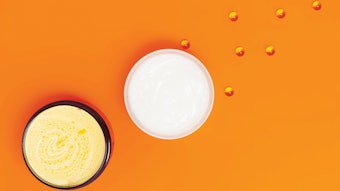
For decades, we've been taught the same story about acne: excess oil clogs pores, bacteria multiply and inflammation follows. This neat, linear progression has guided our treatment protocols for generations. There's just one problem—it's wrong.
This article is only available to registered users.
Log In to View the Full Article
For decades, we've been taught the same story about acne: excess oil clogs pores, bacteria multiply and inflammation follows. This neat, linear progression has guided our treatment protocols for generations. There's just one problem—it's wrong.
New research has flipped this long-held belief on its head, showing us that inflammation doesn't come at the end of the acne process but at the very beginning, before you can even see anything happening on the skin. This one discovery changes everything we thought we knew about acne and explains why so many of our go-to treatments only work partially or give short-lived results.
Yes, what you just read is true: there's no such thing as non-inflammatory acne. Even those blackheads we've been calling "non-inflammatory" are inflammatory from day one—actually, before day one. Under the influence of invisible inflammation beneath the skin's surface, keratinocytes stick together and change sebum's chemical makeup. As a result, tiny plugs called microcomedones form in the middle of the pore, where they send out "find me signals"—biochemical distress prompts calling immune cells to the area, starting a chain reaction that eventually becomes the acne we see.
Suddenly, so many puzzling observations from years of practice start to make sense. Ever wonder why some clients with barely any oil production still break out? Or why harsh, drying treatments often make things worse? Why gentle, anti-inflammatory approaches sometimes work better than going full-force with bacteria-killing treatments? The answer is simple: we've been treating the wrong thing at the wrong time.
When we focus on killing bacteria and stripping oil, we're jumping into the middle of the story instead of starting at the beginning. By the time bacterial overgrowth occurs, the inflammatory cascade is already in full swing. Worse, aggressive treatments can trigger more inflammation, creating the conditions that keep the acne cycle going.
What we're learning is that acne is really a chronic inflammatory condition driven by a complex dance between the immune system, skin microbiome, sebaceous glands and follicular keratinocytes. It's a delicate ecosystem where an imbalance in any one factor can throw everything else off too.
Once we grasp this concept, everything about treatment changes. Instead of leading with harsh exfoliants or broad-spectrum antimicrobials, we need to prioritize anti-inflammatory strategies from the beginning. Instead of trying to eliminate all bacteria, we need to support a healthy microbial balance. Instead of stripping away oil, we need to improve sebum quality and prevent oxidation.
Beyond individual treatments, we also need to transform how we educate clients. Old narratives about "dirty skin", "too much oil" and "kill bacteria" need to be replaced with an understanding of acne as an inflammatory condition that is best managed through gentle, consistent care focused on calming silent and obvious inflammation, preventing sebum oxidation with oil-soluble antioxidants, balancing the microbiome rather than eliminating it and effective but non-comedogenic barrier repair.
For estheticians willing to embrace this paradigm shift, the results can be pretty dramatic. Studies show that when we target inflammation first, rather than bacteria or oil, we see significantly better outcomes. Even stubborn acne improves when we calm the inflammation causing breakouts, not just the pimples we can see.
Before you panic, you don't need to throw out everything you know—many effective treatments work precisely because they have anti-inflammatory properties we haven't fully appreciated. Salicylic acid, for instance, isn't just a pore-clearing exfoliant; it's also a potent anti-inflammatory. Niacinamide doesn't just regulate oil; it calms inflammatory pathways and helps repair damaged barriers. Even gentle extraction techniques work better because they minimize the trauma that triggers inflammation.
For decades, the acne story hasn't just been incomplete—it's been backwards. By understanding inflammation as the true starting point, we can finally address acne at its source and deliver the lasting results our clients deserve.










